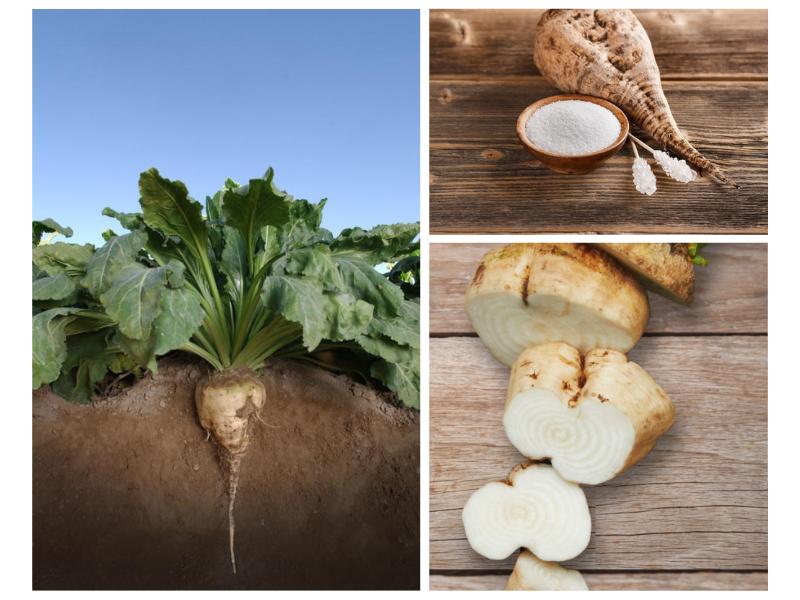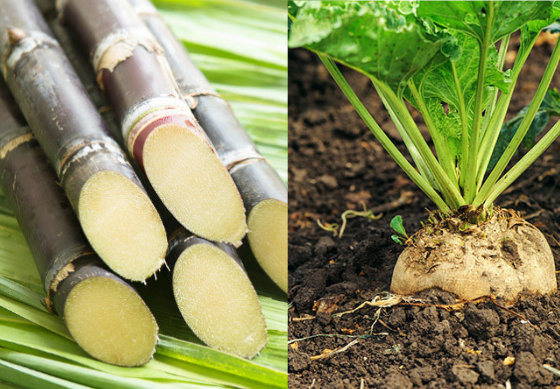The Ultimate Contrast: Beet Sugar vs. Cane Sugar Explained
The contrast between beet sugar and cane sugar provides a remarkable exploration of two primary sugar in the cooking world. While both sugars share an usual composition of sucrose, their beginnings, refining methods, and flavor profiles diverge significantly. This distinction prolongs past taste, influencing ecological effects and dietary aspects related to their production - beet sugar vs cane sugar. As we navigate via these various variables, the effects for both consumers and manufacturers become increasingly evident, raising a vital concern: which sugar absolutely rules supreme in the complicated landscape of sweet taste?
Origins of Sugar Sources
The beginnings of sugar sources are mostly rooted in two unique plants: the sugar beet and the sugar cane. Sugar cane, a tropical lawn native to Southeast Asia, has been grown for over 2,500 years.
On the other hand, sugar beet is a relatively contemporary resource, created in Europe throughout the late 18th century as a reaction to sugar cane shortages. The plant prospers in pleasant climates, making it appropriate for farming in regions such as France and Germany. The effective removal of sugar from beetss marked a significant agricultural development, as it gave an alternate to cane sugar, specifically throughout durations of profession disruption.
Both plants have played crucial functions in forming the global sugar industry. Their unique development settings and historical contexts show the variety of sugar resources, inevitably influencing regional agricultural methods and financial growth.

Handling Techniques Described
Different processing methods are employed to remove sugar from both sugar beet and sugar cane, each tailored to the specific attributes of the resource material. When it comes to sugar beetss, the procedure begins by harvesting the origin and afterwards washing it to remove dirt and contaminations. The beetss are then cut into thin strips, called cossettes, and based on warm water extraction, which liquifies the sugar. The resulting juice goes through clarification, where lime and heat are made use of to eliminate impurities. This juice is after that focused through dissipation and formation, producing raw sugar.
Conversely, sugar cane handling entails a different method. The cleared up juice is focused through evaporation, similar to beet sugar handling, prior to formation occurs. Both processes culminate in the production of raw sugar, which might undertake more refining to achieve the desired purity and high quality.
Nutritional Distinctions

When contrasting beet sugar and cane sugar, remarkable nutritional differences emerge, though they are frequently subtle. Both types of sugar are mainly composed of sucrose, supplying about the exact same caloric material-- about 4 calories per gram. The differences lie in their trace mineral content and the visibility of particular substances that may have minimal dietary effects.
Beet sugar includes percentages of potassium, calcium, and iron, while cane sugar usually provides slightly greater concentrations of these minerals. Additionally, cane sugar may retain even more natural molasses during processing, which can add to map amounts of antioxidants and various other advantageous substances. This is specifically true for less polished ranges, such as raw cane sugar.
Regardless of these differences, both beet and cane sugars are predominantly made up of easy carbohydrates, with a high glycemic index, bring about similar results on blood sugar degrees. While there are minor dietary differences, the overall wellness impact of eating either kind in moderation stays largely comparable. People seeking Get the facts to lessen sugar consumption for health and wellness reasons need to consider both types with equivalent scrutiny, concentrating on total dietary patterns instead than the resource of sugar
Preference Accounts Compared
Taste profiles of beet sugar and cane sugar exhibit unique features that can influence their culinary applications. While both sugars are chemically comparable, their taste subtleties can impact food and beverage results. Cane sugar, often viewed as having an extra complicated, nuanced sweet taste, is originated from the tall turf of the sugar cane plant. This selection often tends to impart a subtle, fruity undertone, enhancing the flavors of baked items and confections.
In comparison, beet sugar, extracted from sugar beetss, is recognized for its cleaner, extra simple sweetness. This high quality makes it specifically ideal for dishes calling for a neutral artificial sweetener that permits various other tastes to radiate. Some culinary specialists argue that beet sugar might leave a somewhat earthy aftertaste, which can be undesirable in delicate treats.
Additionally, the understanding of sweetness intensity differs in between both, with some tasters determining cane sugar as sweeter contrasted to beet sugar at comparable measurements. Ultimately, the choice in between beet and cane sugar may rely on the details application, with each sugar offering special qualities that can improve or complement various dishes. Understanding these distinctions permits for notified decisions in cooking methods.

Ecological Impact
The ecological influence of sugar production-- whether from beet or cane-- has actually garnered boosting focus in the last few years as a result of its implications for sustainability and environmental health. Both sugar sources display distinct environmental impacts, affected by agricultural methods, land usage, and source consumption.
Cane sugar manufacturing frequently requires huge areas of tropical land, which can cause logging and loss of biodiversity. Additionally, the growing of sugarcane is regularly associated with high water usage and considerable chemical and plant food application, contributing to soil destruction and water air pollution.
Conversely, beet sugar is mainly expanded in temperate regions, normally calling for less water and land. Its cultivation can still include the use of chemical inputs, influencing neighborhood communities. Furthermore, the energy-intensive handling of beet sugar can add to greenhouse gas exhausts.
Lasting farming practices and developments in innovation are crucial for mitigating the environmental impacts of sugar manufacturing. Organic farming approaches, incorporated parasite monitoring, and reliable water use can improve the sustainability of both beet and cane sugar industries, ultimately resulting in a minimized environmental footprint click site and a healthier planet.
Conclusion
In summary, the contrast between beet sugar and cane sugar highlights both similarities and differences that affect their application. While both kinds of sugar share a primary make-up of sucrose, their taste profiles, refining techniques, and environmental impacts vary substantially. Cane sugar is defined by its complex sweet taste, while beet sugar offers a more uncomplicated taste. Ultimately, the option between these 2 sugars view it now ought to be guided by certain culinary demands and environmental factors to consider, enabling educated decision-making.
The beginnings of sugar sources are mostly rooted in 2 distinct plants: the sugar beet and the sugar cane.Different handling approaches are used to extract sugar from both sugar beet and sugar cane, each tailored to the specific qualities of the resource material.Beet sugar contains little quantities of potassium, calcium, and iron, while cane sugar generally uses somewhat higher focus of these minerals.Regardless of these distinctions, both beet and cane sugars are primarily composed of basic carbohydrates, with a high glycemic index, leading to similar results on blood sugar degrees. Cane sugar, typically viewed as having a much more intricate, nuanced sweetness, is derived from the tall lawn of the sugar cane plant.